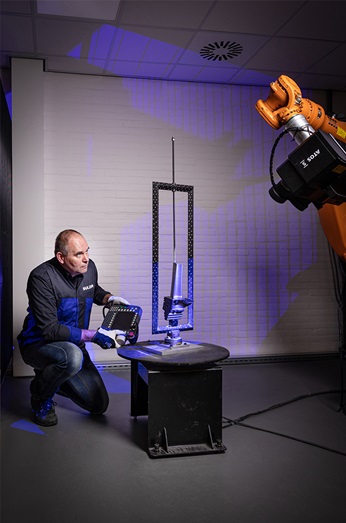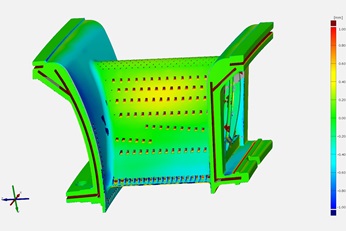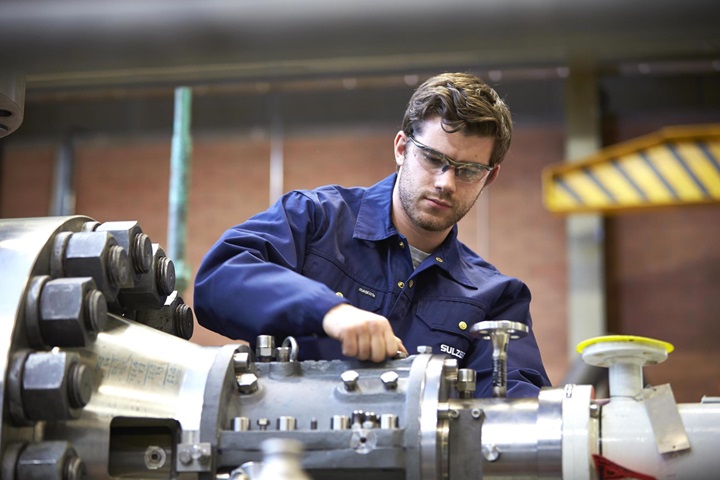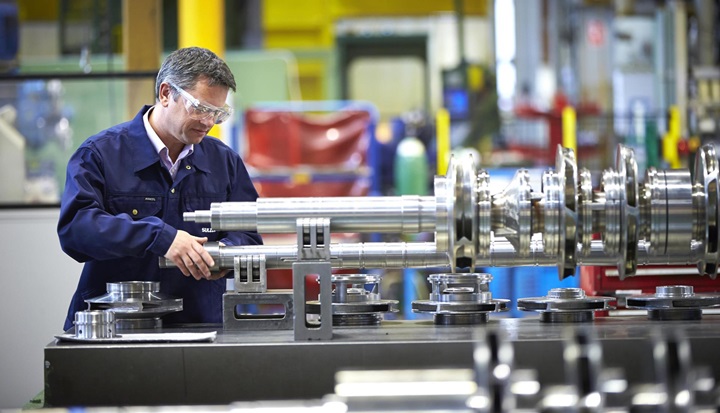- Produces complete models of parts in minutes
- Accuracy up to 0.01 mm
- Can be used in the workshop and on-site
- Applicable in fault finding, quality assurance and reverse engineering
- Suitable for complex components such as turbine blades and pump impellers
- Provides detailed, accurate part data
- Small and large components supported
- Full models are held in a database for future use
- Enables spares and repairs for legacy equipment
3D scanning guarantees the perfect picture
3D scanning for rotating equipment
A 3D scanner offers the ability to create a complete model of a component by measuring millions of reference points across the physical part and triangulating them. This web of measured points builds a complete, highly accurate virtual model that can be used for fault finding, quality assurance and reverse engineering.“We have decades of experience in using 3D scanning at the service center. It’s a process that is applied to nearly every component we work with, whether it’s new or from equipment requiring repair. Every single scan we take we store on record. If a problem arises in the future, instead of scanning the part again, we can instantly access the original model when we need it.”
Robin Peeters, 3D Technician at the Sulzer Venlo Service Center
Fast, versatile and accurate scanning
The GOM Metrology scanner used by the service center is at the head of its field. It offers the ability to measure parts from a few millimeters up to 20 m, with an accuracy of 0.01 mm depending on measuring volume.
The main advantage over a coordinate measuring machine (CMM) is that a 3D scanner can create a complete model of a part quickly. For example, it can measure a complex turbine blade in around five minutes, producing a highly accurate virtual version. With a CMM, multiple scans are often needed for further investigations, something that is not required with a fully realized 3D model. Additionally, 3D scans don’t require sturdy fixtures or contact with the part.
Sulzer mounts the scanner on a programmable robot for most projects. This fast process can be conducted in the dedicated scanning area at the service center or on the workshop floor. To assess large parts at a customer’s facilities, the scanner can be mounted on a stand. Recent on-site projects have included scanning the housing of a large pump at a nuclear power plant in Germany. Sulzer’s scanning experts travel worldwide in support of customers in the U.S.A, China, Argentina, Jordan, Saudi Arabia and more.
Applicable to any component
In terms of new components, the scanner is used to prove that replacement parts are correct before they are installed on equipment. The technology can pick up potential issues that can’t be ascertained visually - such as the twist on a turbine blade. Furthermore, customers get increased assurance that a newly supplied, cast, machined or coated component will be up to the task.
It supports repair work too. Scanning a component allows Sulzer engineers to create a detailed report on its condition. Information is sent to the customer before repair work begins. This has the dual benefit of identifying the optimal approach in terms of repair or replacement, as well as providing accurate data to the customer so they can make an informed decision.
For components from legacy equipment without documentation or original equipment manufacturer (OEM) support, 3D scanning enables Sulzer to reverse engineer complex parts that may not be available as spares. The highly accurate, complete models can be converted into CAD files to support the manufacture of all-new parts. This means equipment that wouldn’t be repairable otherwise can be renewed in a highly cost-effective manner.
Ready for the big part
One of the traditional limitations of 3D scanning is that it only scans a predefined volume. This can make the scanning of very large components challenging. However, Sulzer utilizes the TRITOP optical measuring system to overcome this. TRITOP uses photos to accurately measure reference points on parts.
The photos are combined in one measurement to create a point cloud. This acts as an overarching reference framework for the integration of the 3D scans. The result is that a large part is accommodated in a single file, with 3D scans contained within its point cloud. Using this approach, Sulzer can measure the large equipment common across many industrial applications.
“We continuously invest in the latest 3D scanning technologies so we can support our first-in-class repair and upgrade services. With this, we not only prove the quality of parts, but justify our engineering approach and make repairs happen that would otherwise be impossible. Operators of rotating equipment from any brand can benefit from this technology.”
Robin Peeters, 3D Technician at the Sulzer Venlo Service Center




